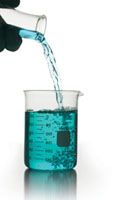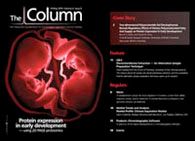Food safety response centre
Thermo Fisher Scientific has opened a global food testing laboratory in Dreieich, Germany.

Thermo Fisher Scientific has opened a global food testing laboratory in Dreieich, Germany. When a chemical contamination event occurs, the Food Safety Response Centre team will mobilize to develop the methods, provide the workflow instructions and recommend the equipment and supplies needed to allow food safety professionals to rapidly respond to the contaminant. According to the company, the centre is strategically located in close proximity to Europe's leading food safety research institutions and is equipped with both a wet lab for sample preparation and a state-of-the-art instrument lab complete with capabilities including liquid and gas chromatography and mass spectrometry.
"Identification and containment of food toxicity require a rapid response, otherwise the threat to human health and global commerce is magnified with each passing day," said Marc N. Casper, president and chief executive officer of Thermo Fisher Scientific, in a statement. "Chemical contamination in food is a growing and costly threat, including risks from environmental contamination and naturally occurring toxins. Our Food Safety Response Centre will be a valuable resource whenever food companies, governments and the people they serve are at risk."
For more information about the centre visit www.thermo.com/fsrc
This story originally appeared in The Column. Click here to view that issue.

Evaluating Natural Preservatives for Meat Products with Gas and Liquid Chromatography
April 1st 2025A study in Food Science & Nutrition evaluated the antioxidant and preservative effects of Epilobium angustifolium extract on beef burgers, finding that the extract influenced physicochemical properties, color stability, and lipid oxidation, with higher concentrations showing a prooxidant effect.
Rethinking Chromatography Workflows with AI and Machine Learning
April 1st 2025Interest in applying artificial intelligence (AI) and machine learning (ML) to chromatography is greater than ever. In this article, we discuss data-related barriers to accomplishing this goal and how rethinking chromatography data systems can overcome them.
Study Examines Impact of Zwitterionic Liquid Structures on Volatile Carboxylic Acid Separation in GC
March 28th 2025Iowa State University researchers evaluated imidazolium-based ZILs with sulfonate and triflimide anions to understand the influence of ZILs’ chemical structures on polar analyte separation.









